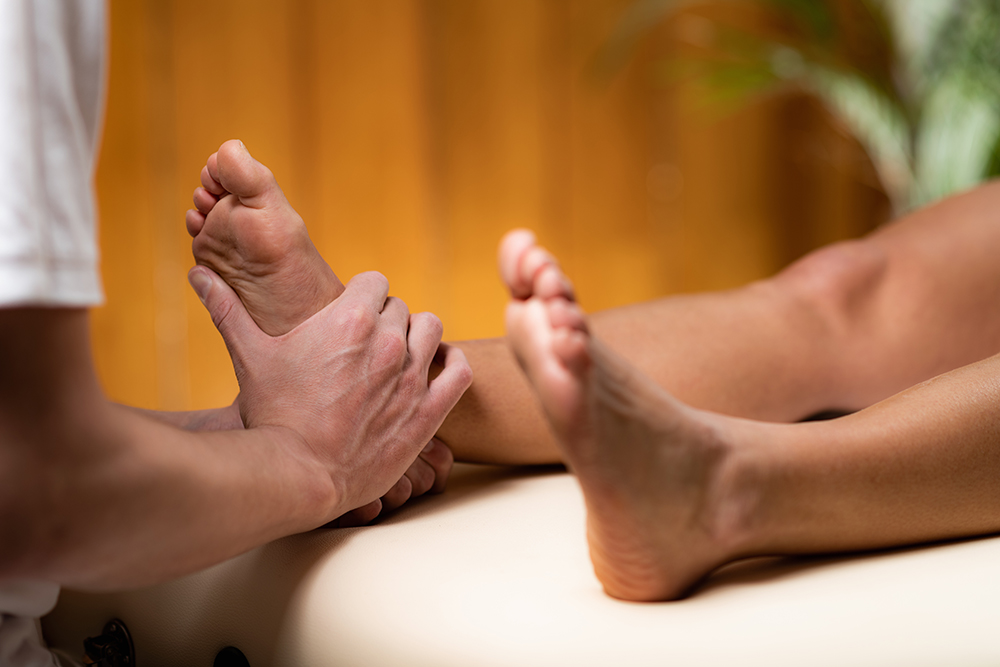Contents
The aftermath of a car accident can be a whirlwind of emotions and logistical nightmares. Between dealing with insurance companies, car repairs and potential legal matters, you may not have your physical health at the top of your mind. However, making physical therapy a priority soon after you’ve been in a car accident can be incredibly beneficial to help reduce your pain, improve your recovery and get you back to your daily life more quickly.
Benefits of going to physical therapy after a car accident
Even a small car accident can have lasting consequences. If you’ve been in a car accident and are experiencing issues, you’re not alone. In 2020, approximately 1.6 million car accident injuries happened. Whiplash, strained muscles and joint pain are all common injuries from car accidents. They can even sneak up on you after a low-speed collision. A physical therapist is a movement expert who is skilled at assessing musculoskeletal issues and creating personalized treatment plans to help address them. Some key benefits of going to physical therapy after a car accident include:
- Managing pain.
- Restoring range of motion.
- Strengthening muscles.
- Improving balance and coordination.
- Preventing the need for surgery.
- Preventing chronic issues.
- Supporting recovery.
- Reducing inflammation.
- Promoting overall well-being.
- Facilitating a return to normal activities.
Should I go to physical therapy after a car accident?
Some car accidents may be minor and you might think you’re in the clear from any issues. However, heading to physical therapy can be beneficial even if you’re not having any immediate symptoms. Some signs you may want to consider going to physical therapy after you’ve been in a car accident can be:
- Experiencing any pain, regardless of location or intensity.
- Feeling stiffness or restricted movement in your joints or muscles.
- Losing strength and finding it difficult to do everyday tasks.
- Experiencing dizziness or balance problems.
- Having concerns about potential injuries that may not have presented symptoms yet.
Even if you don’t fall into any of these categories, talking to a physical therapist is still a smart decision. Early intervention can help find potential problems before they become chronic. This can save you time, money and discomfort in the long run.
How long does physical therapy last after a car accident?
The time you spend going to physical therapy sessions after a car accident can depend on the severity of your injuries and your overall progress. After your initial visit, which will involve an evaluation, going over your medical history, and talking about the car accident and its effects, your physical therapist will create a personalized treatment plan specifically tailored to your needs and concerns. As you progress through treatment, your physical therapist will regularly reevaluate your progress. This reevaluation allows them to adjust your treatment plan as needed through your recovery journey. It will also help them know when you have achieved your treatment goals and sessions can end. You can expect to go to physical therapy sessions anywhere from a few weeks to several months.
Physical therapy for back pain after a car accident
Back pain can be one of the most frequent complaints after a car accident because there is such a high chance of injury happening. The sudden impact of a collision can strain muscles, ligaments and discs in your spine. These issues can cause a range of pain and discomfort levels depending on the severity of your issue. Physical therapy can be an effective and beneficial treatment to help address back pain. Physical therapy treatments that can help back pain can include:
- Manual therapy — Manual therapy is an umbrella term that encompasses a number of hands-on techniques like soft tissue manipulation and joint mobilization. With manual therapy, you can imagine your physical therapist is a skilled sculptor working on your body like a piece of clay. Soft tissue manipulation can be like gently smoothing out rough edges, helping to release muscle tension and boosting circulation. Joint mobilization is like carefully adjusting an out-of-place piece of the sculpture. It helps to restore proper movement in your spine. Joint manipulation is cautiously used to help precisely correct a joint dysfunction to help relieve pain.
- Strengthening exercises — Think of your core and back muscles as your body’s internal support system for your spine. Strengthening exercises can be like building stronger pillars. These exercises will be tailored to your needs and can include using tools like resistance bands or body-weight exercises. They help you to build strength and stability in your core and back. This can help improve your posture and reduce stress on your spine.
- Stretching exercises — After a car accident, the tensing you did in anticipation of the hit or at any time during the accident can cause your body to become tightly wound like a spring. Stretching exercises can help carefully relax tight muscles to help improve the flexibility in your back and hamstrings. These exercises can help improve your range of motion and reduce stiffness and pain.
Prioritize your physical health after a car accident with physical therapy at Lattimore PT
Here at Lattimore PT, our skilled physical therapy team is dedicated to helping you recover from your car accident injuries. While the aftermath of a car accident can be overwhelming, you don’t want to underestimate the power of healing physical therapy can have. We offer a personalized approach that can help address pain, stiffness and movement limitations, whether you’re experiencing back pain or other injuries. By using a combination of effective modalities, we can help empower you to take control of your recovery and get back to the life you enjoy. Don’t wait for your pain to get worse — start your journey toward healing soon.
Contact our team today for more information or to schedule an initial appointment.



